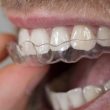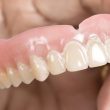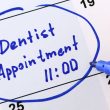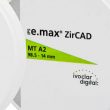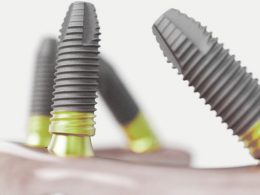Table of Contents
As a general rule, the oral rehabilitation process of a person tends to be associated only with the design, development and installation of prosthetic devices; generally fixed, which regain his functional capacity and the appearance of the smile.
However, exactly as happens in a civil works project, before constructing a building (the prosthesis in our case) it is necessary to study and adapt the terrain (the mouth) to achieve a stable, solid, safe and with guarantees of long-term success support for the structure. Although it is hard to believe, Specialized Prosthodontics is a true biological engineering exercise.
The preparation of the mouth for prosthetic purposes is as or more important than the prosthesis itself, since the quality and, above all, the durability of the treatment provided; will depend on its correct planning and execution.
Diagnosis and Treatment Planning
The main requirement to receive any type of dental prosthesis is to have a healthy mouth and free of active pathologies; especially in complex or very extensive cases.
Complex cases are those in which patients arrive at the clinic with their mouths in very poor condition (with a large number of missing and/or destroyed teeth), but are nevertheless willing to invest time and money in obtaining a healthy, attractive and properly functioning dentition. In addition, they usually show great enthusiasm and commitment to all the aftercare that will be necessary to keep their rehabilitation in good condition and for many years.
In these cases, it is essential to carry out a complete diagnostic study, including photographs of the face, mouth and teeth from different angles and plaster models to study how the teeth articulate and the jaws relate to each other. Also, X-rays and 3D scanners are indispensable, according to the exigency of the case.
Similarly, a careful study of the patient’s gums should be carried out, determining whether there is mobility in the teeth, assessing the state of his old fillings and specifying his endodontic requirements. The professional team will also have to decide which pieces are of poor or reserved prognosis to proceed with their extraction. In some cases, it is even possible that orthodontics is required, to align certain teeth and to be able to place the implants or fixed prostheses in a correct or more adequate way.
In these complex cases, at DENTAL VIP we always start by cleaning teeth and treating the gums, the extractions indicated if applicable, and the necessary general Dentistry procedures such as direct fillings, root canals and dental reconstructions.
Then, we carry out a diagnostic wax-up and a digital mock up. With the diagnostic wax-up we obtain most of the characteristics that we must give to definitive restorations, mainly those related to the size, shape and position of the new teeth. In addition, it indicates the amount of tooth structure that must be reduced or rebuilt in the preparations, before proceeding with the carving of dental veneers or crowns.
The digital mock up or smile design consists of making a detailed digital study of the dental, gingival and facial characteristics of a person when smiling to identify what changes or modifications would be favorable, from an aesthetic point of view, to harmonize and beautify the appearance of his smile. Then, with the use of digital photography and a professional imaging software, a graphic simulation of the suggested result is made and submitted to the patient for consideration.
But in order to make any extensive oral rehabilitation or digital smile design a reality, the mouth must first be sanitized and prepared, using a multidisciplinary approach that may require the intervention of various specialties.
1- Oral Surgery
Pre-prosthetic surgery is defined as the set of surgical procedures aimed at facilitating the manufacture of prostheses or improving their prognosis. Some of the surgical procedures that are often required before starting the prosthetic phase are briefly described below:
- Tooth and Broken Roots Extraction Extraction of roots and teeth included, mobile, with a poor prognosis, not restorable or that represent large foci of infection.
- Gum Surgery To perform deep periodontal cleanings, correct infections and bone defects, place grafts and improve the prognosis of the teeth that will remain in the mouth. Similarly, it may be necessary for aesthetic reasons, to correct asymmetries and excess tissue.
- Clinical Crown Lengthening It is often necessary for aesthetic factors or to expose a greater amount of healthy dental tissue, something essential to be able to precisely define the margins or termination lines of indirect ceramic restorations.
- Mucogingival Surgery To increase the amount and thickness of the attached gingiva, make it more resistant and protect the bone that supports the teeth. In addition, it may be necessary to remove frenula or abnormal muscle attachments and increase the depth of the vestibular sulcus, in order to facilitate oral hygiene procedures.
- Excess Soft Tissue Excision The excess soft or fibrous tissue at the level of the residual ridge, can result in a poorly fitting prosthesis. Fortunately, soft tissue surgery is usually faster and less invasive than procedures aimed at treating alveolar bone.
- Alveoloplasty It is a surgical procedure that reshapes and regulates the bone surface where a tooth was extracted or lost. Alveoloplasty may be necessary to place dental implants or to correct the volume of the gum and achieve a better aesthetic result of the rehabilitation.
- Alveolar Ridge Augmentation Insufficient bone tissue can cause as many or more problems than excess soft tissue. After losing teeth, the alveolar ridges begin to be reabsorbed. This can affect the fit and aesthetic appearance of your restoration. Generally, it is a detail that becomes more important at the level of the anterior teeth, and it is usually solved with the placement of blocks of autologous bone taken from the same patient.
- Bone Grafts In the vast majority of cases to increase the quantity and quality of the recipient bone, as a previous or simultaneous step to the placement of dental implants.
- Sinus Lift It is a surgical procedure that aims to increase the amount of bone in the posterior portion of the upper jaw, at the level of the molars and premolars; lifting the sinus membrane and placing a bone graft under it. This surgery is very common and many times necessary to be able to place dental implants in the area.
- Dental Implants Placement Without a doubt, the fundamental pillar of any quality oral rehabilitation. Titanium implants are artificial substitutes for the roots of the teeth, and the only devices that allow us to rehabilitate the patient without “damaging” their natural teeth, and to carry out fixed restorations in the absence of them.
2- Periodontics
A healthy gum is a fundamental requirement to be able to receive prosthetic or restorative treatments. There are numerous surgical and non-surgical procedures used to treat periodontal disease that result in healthy, beautiful, and long-lasting oral rehabilitations. Within conservative (non-surgical) treatments, periodontal scaling and root planing procedures, are almost always necessary.
In addition, on many occasions it is necessary to instruct the patient in the brushing and oral hygiene techniques, and give them time to practice and master them; before making the final prostheses. It is one of the most ethical and sincere acts that a Prosthodontist can offer.
3- Endodontics
It is common in complex cases that some teeth present big cavities, infections and pulp necrosis; sometimes with abscesses and pus at the level of the root apices. Despite this, many of them still have enough healthy remaining dental structure to be restored, probably with a root canal, post and core, and a ceramic crown.
In these cases, root canal or endodontic treatment of the affected teeth is the only way to eliminate their root infection and prepare them to retain the new restorations.
Furthermore, even if the tooth is completely healthy, it is often necessary to endodontic it if it is to act as an abutment for a conventional fixed prosthesis or if it must be restored with a full veneering crown due to malposition or functional problems. Currently, preventive endodontics for prosthetic reasons is a widely accepted criterion worldwide. Its purpose is to avoid future complications, once the definitive crowns or bridges have been cemented.
4- Restorative Dentistry
The vast majority of endodontic treated teeth must then be partially deobturated to receive the posts and cores that will retain the definitive crowns at their roots.
A core or artificial abutment is a type of dental restoration that is required when insufficient healthy dental tissue remains to successfully retain a conventional crown. It is a structure that replaces the coronal portion of the tooth and strengthens the root, to prevent its fracture.
Artificial abutments or posts and cores are divided into two main groups: prefabricated and castings. The first ones are generally made of fiberglass, carbon fiber, fiber-reinforced resins, ceramic, or zirconia. Those of the second group are manufactured in the laboratory by foundry and casting of high-strength metal alloys, based on an individualized acrylic pattern prepared by the Dentist in the office.
The most important thing is that, regardless of the type of structure used, the necessary time is devoted to do good patterns and reconstructions, even if they require a lot of appointments or work hours.
5- Orthodontics
It is indicated in cases of patients who require an extensive oral rehabilitation but lack the space or adequate position of their teeth to achieve an ideal treatment result, or at least, that is functional and aesthetically acceptable. These patients are generally referred to the Orthodontist for correction of specific problems that greatly help in the overall treatment plan.
The consolidation and redistribution of spaces, the straightening of inclined abutment teeth and the leveling of the occlusal plane; are usually the most frequent indications for this type of Orthodontics.
6- Occlusal Therapy
Sometimes, the degree of dental destruction is so great, that it also compromises the occlusal function of the person; that is, the way in which his gnathological or masticatory system works.
In cases of mandibular or TMJ (temporomandibular joint) dysfunction, it is necessary to relax and/or strengthen the masticatory muscles and develop new functioning engrams (neural patterns) before placing the definitive prostheses.
The occlusal rehabilitation process is quite complex and very similar to the physical rehabilitation process that a person must go through after an accident or limiting illness.
Temporary prostheses are the best tool to restore the vertical occlusal dimension and the new sagittal and transverse relationship between the dental arches. Their use for a few months will allow us to make a therapeutic diagnosis of the case and will tell us if the occlusal relationships that we have established are correct and comfortable for the patient, and if they should be replicated or modified in the definitive prostheses.
How Long Then Does It Take to Complete a Complex Case?
It all depends on the initial oral conditions of the patient and the goals of treatment. The more natural teeth that are to be treated, the more time and number of visits to the clinic will have to be spent.
Complex cases are generally handled in two phases. In the first one, all the procedures aimed at sanitating the mouth and preparing it for the final rehabilitation are carried out. A month of intense work, at the rate of 1 or 2 clinical sessions per working day, usually provides the time necessary to complete all the proposed pre-prosthetic objectives.
The second phase, although more noticeable and pleasant for the patient, is usually shorter and more relaxed. More than 75% of the professional work associated with a complete oral reconstruction, is carried out in the pre-prosthetic phase. On average, the taking of impressions, laboratory processes, tests, adjustments and fixation of the definitive prostheses; usually require between 2 and 3 weeks of time, regardless of the type of restoration to be performed (on implants or natural teeth).
How Is It Done in the Case of International Patients?
If the cases are very complex, extensive or require the placement of dental implants, patients often require two trips to our country to complete the treatment.
In the first one, in 2 or 3 weeks, extractions, caries restoration, scaling and root planing, periodontal treatments, endodontics, abutments reconstruction, preprosthetic surgeries, grafts and dental implants are performed; and of course, also a good provisional prostheses (fixed or removable) that stabilize the bite and allow people to return to their usual activities without major aesthetic and functional problems. It is a truly intensive and multidisciplinary phase of treatment.
On the second trip, generally at 5 or 6 months later, once the bone healing process of the implants (osseointegration) has been completed and the patient’s occlusal pattern has been restored, we limit our work to preparing the definitive ceramic or hybrid restorations; always on based on the agreed expectations and the smile design previously elaborated in the initial phase of diagnosis and treatment planning.
“An Oral Rehabilitation with Dental Implants, Generally Requires 2 Phases of Treatment. 5 or 6 Months, Is Usually the Time Lapse Necessary for Its Execution”.
DENTAL TIP
If I Take a Risk and Opt for the Immediate Loading Protocol for Dental Implants, Could It Save Me a Trip?
Despite its great risks and limitations, the “Teeth in a Day” technique or immediate loading protocol is increasingly used in oral implantology. Its only advantage is that fixed temporary prostheses are screwed in on the same day of surgery (or after 2 or 3 days).
However, this protocol does not decrease the total treatment time in any way, as it is also necessary to complete the osseointegration period to perform the definitive restorations. So, if you are visiting us from abroad, you will still have to return to complete your rehabilitation.
We Are Just One Step Away!
Globalization and dental tourism are two extraordinary tools for accessing world-class Dentistry. Currently millions of people travel to other countries in search of opportunities and prices that allow them to face their dental treatments and recover their smile.
Wherever you are, generally in just a few hours you will be able to get to Venezuela, move to a comfortable hotel and start your oral rehabilitation process with dental implants, porcelain veneers and 100% metal-free ceramic structures; at only a fraction of the cost you would have to pay in your home country.
Almost certainly traveling or not traveling will mean the difference between satisfaction and resignation, or at best; between just getting “something” or be able to reach “the best option”. At DENTAL VIP we are very good hosts and excellent professionals.
Contact us and ascertain how traveling to Venezuela can improve your self-esteem and quality of life!


